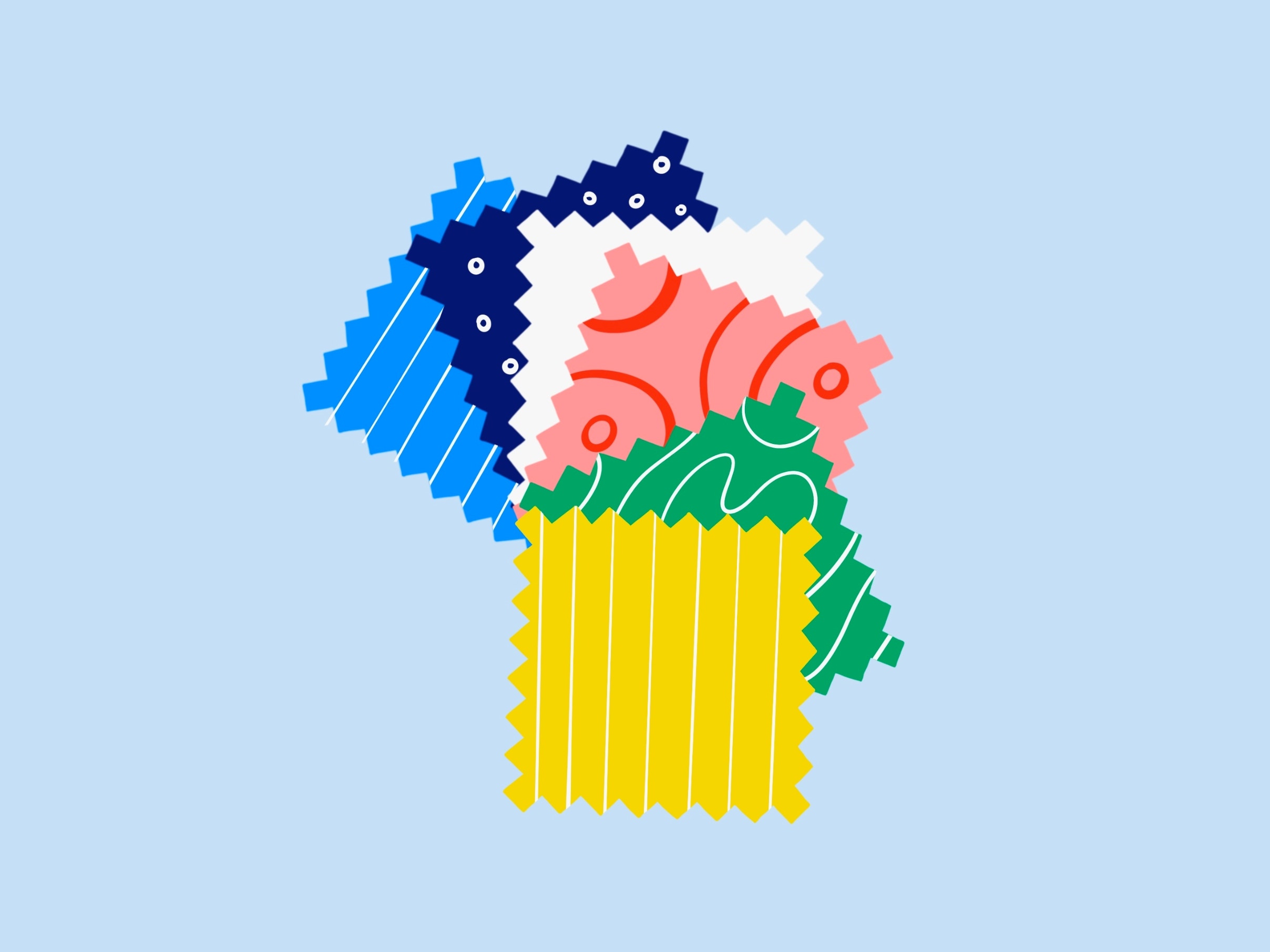Bedding
Published February 9, 2022
12 minWhat Is Viscose?
Viscose is a popular semi-natural fiber used to make dresses, upholstery, carpets, and even your bedding. If you haven’t heard of it before, you must have heard of the name of rayon. Both the terms ar

Table of contents
What Is Viscose?Process of Viscose ProductionIs viscose environment-friendly fabric?Viscose Fabric: Pros and ConsUses of Viscose RayonOther Types of RayonViscose Rayon vs CottonViscose Rayon vs PolyesterViscose Rayon vs ModalHow to Care for Viscose RayonFrequently Asked Questions
Viscose is a popular semi-natural fiber used to make dresses, upholstery, carpets, and even your bedding. If you haven’t heard of it before, you must have heard of the name of rayon. Both the terms are used interchangeably. But what is viscose? All the details are served ahead. Keep reading to learn about this fabric that is ruling the market.
What Is Viscose?
Viscose is a semi-synthetic material that comes from natural sources of regenerated cellulose. But what is viscose made of? It comes from wood pulp. The pulp gets spun into yarns to transform it into a fabric. You might think viscose is eco-friendly since it is manufactured from plants. However, it is made by treating cellulose with chemicals. Viscose comes with a lustrous finish like silk and feels as soft as cotton. Interestingly, it was developed as a cheaper alternative to natural fibers.You can trace the story of viscose to nineteenth-century Europe. The French scientist and industrialist Chardonnet had invented the first commercial viscose material. However, it was highly flammable. So, it didn’t survive in the market for long, and there was a search for a safer material. It was in 1892, that a group of three British scientists discovered and patented the production process. And the first commercial production started not before 1905. But, what is rayon made of?Trees and plants from which viscose rayon is derived Viscose rayon is derived from the wood pulp of eucalyptus trees. However, to curate this fabric, any plant can be used, such as- Cotton
- Soy
- Bamboo
- Beech
- Pine
- Sugar Cane
Process of Viscose Production
The steps involved in the viscose production process include; Steeping: This is the first step where the plant is chipped to get the wood pulp. The pulp is then dissolved in chemicals to form a brown solution, followed by bleaching and cleaning. Now, it is treated with sodium disulfide, and sodium hydroxide alkali cellulose is generated in this step. Shredding: In the second step, alkali cellulose is converted into fluffy material using machines. The solution is passed through a device called a spinneret. It leads pulp fabric to the formation of filaments.Aging: After the shredding process, the material obtained is transferred into a steel container and stored at a specific temperature to achieve the right viscosity. Xanthation: In this step, cellulose xanthate is formed. Ripening: Finally, the viscose is allowed to ripen for a certain period.Preparation of spinning solution: Chemicals are then added to cellulose xanthate to make it soft and strong. Filtration: Any undissolved material is flushed out in this step.Spinning: The final step leads to the viscose solution in diameters between 0.05-0.1 mm. The filaments are spun into viscose yarns which can be woven into the fabric.Is viscose environment-friendly fabric?
While it seems eco-friendly since it is taken from plants, viscose is not good for the environment. The plant cellulose taken from the wood pulp is made with chemicals. In fact, the solvents used during the process are harmful to both humans and the environment. Also, viscose production leads to deforestation as you require lots of wood pulp to create the fabric.Viscose Fabric: Pros and Cons
Just like anything else, viscose has its set of benefits of viscose and drawbacks. Let us look.Pros- It is super lightweight and airy since it has natural origins.
- Its absorbent nature makes it perfect for you if you sweat a lot.
- Viscose is a breathable fabric suitable for summers.
- It retains its color even after endless washes.
- It can drape well like silk.
- It is inexpensive compared to cotton and silk.
- This rayon fiber shrinks after washing.
- It is delicate, and the fibers may break apart if you handle it roughly.
- I am drying it in the sunlight for long hampers the fabric quality.
- Viscose retains dyes. So, you will have a tough time removing stains from it.
- It is not eco-friendly and sustainable since many chemicals are used while manufacturing.
Uses of Viscose Rayon
What is viscose used for? It is a versatile fabric and has a wide range of uses. You can find it everywhere, from clothes to bedding.Clothes You can wear clothes made from viscose rayon material on formal and informal occasions. They are super comfortable and also have a lustrous touch. Dresses made of viscose are available in multiple colors and shades since it retains dyes very well. Sheets Viscose sheets can be your perfect companion if you sweat a lot while sleeping. It will wick off all the sweat keeping you cool. Furthermore, it doesn’t trap your body heat. Curtains and Window Drape The silky smoothness makes viscose an excellent choice for curtains. They can give your room an enthralling look that will capture people’s attention. Mattress Flame RetardantsThe bedding materials contain flame retardants to ensure that they meet the flammability standards, and rayon is used for the same. It easily passes the flammability tests, and the manufacturing cost is low.Cellophane You have seen those thin transparent sheets used in food packaging. Yes, they are made of viscose. Its low permeability keeps air, water, and microbes away.Other Types of Rayon
Apart from viscose, modal fiber and lyocell are the two other types of rayon. Now, you might wonder what the difference is between rayon and viscose. But viscose is a type of rayon. All the rayon fibers are manufactured from wood pulp. However, there is a difference in the process.Modal and viscose are manufactured similarly. Only the former is stretched while spinning. So, the fibers are longer and more delicate. Lyocell has a different manufacturing process. Unlike the other two, it gets treated with an organic compound. Therefore, it is eco-friendly.Viscose Rayon vs Silk Take a look at the comparison chart between Viscose Rayon vs Silk fabric!| Characteristics | Viscose Rayon | Silk |
|---|---|---|
| Feel | Soft and silky | Smooth and soft |
| Breathability | Super breathable and allows air to pass | Less breathable than viscose-rayon |
| Price | Cheaper alternative to silk | Way more expensive than viscose-rayon |
| Shine | Lustrous | More lustrous and reflects light |
| Cleaning | Best when hand washed; avoid machine washing | Dry cleaning is the best option |
| Eco-friendliness | Not eco-friendly as it contains chemicals | Being a natural fiber, it is eco-friendly |
Viscose Rayon vs Cotton
Viscose rayon feels as soft as cotton. However, a comparison between rayon vs cotton will reveal their differences.| Characteristics | Viscose Rayon | Cotton |
|---|---|---|
| Origin | Made from wood pulp or cellulose | Made from natural cotton fibers |
| Feel and Breathability | Soft and breathable; wicks away moisture | Super soft and breathable; doesn’t wick away moisture |
| Versatility | Versatile fabric that can be blended with any material | Equally versatile and can be mixed with other fabrics |
| Washing | Hand washing viscose is recommended to maintain the quality | Machine washable |
| Eco-friendliness | Contains chemicals and hence is not eco-friendly | Eco-friendly as it is a natural fiber |
Viscose Rayon vs Polyester
A comparison of rayon vs polyester will reveal the similarities and differences between these two types of fabric materials.| Characteristics | Viscose Rayon | Polyester |
|---|---|---|
| Origin | Made from cellulose treated with chemicals; thus it’s semi-synthetic | Made from petroleum treated with chemicals |
| Pilling | More likely to peel than polyester | Resistant to pilling |
| Wrinkling | May wrinkle after repeated washing | Does not wrinkle even after multiple washes |
| Moisture-wicking | Not ads moisture-wicking as polyester | Wicks away moisture like a pro |
Viscose Rayon vs Modal
Both of them are types of rayon. So, they are made from the same material i.e. wood pulp. However, they don’t feel like the same fabric material. That is because their manufacturing processes are slightly different.| Characteristics | Viscose Rayon | Modal |
|---|---|---|
| Breathability | Less breathable than modal | More breathable because they are stretched during the manufacturing process |
| Eco-friendliness | Not eco-friendly since it contains chemicals | More eco-friendly because the concentration of sodium hydroxide is less |
How to Care for Viscose Rayon
Viscose fabric care is not easy. You have to be careful and follow all the instructions of the manufacturer.- Always go for dry cleaning if you want the fabric to last long.
- Do not opt for spot treatment as it may lead to stubborn stains.
- Viscose washing is not recommended.
- Putting it in a machine might make it rough.
- If you have to wash it, hand washing in cold water is the best option.
- Make sure you use a mild cleaning agent.
- Do not squeeze the fabric. That might stretch it.
- While drying, it is better to avoid direct sunlight for long hours.












